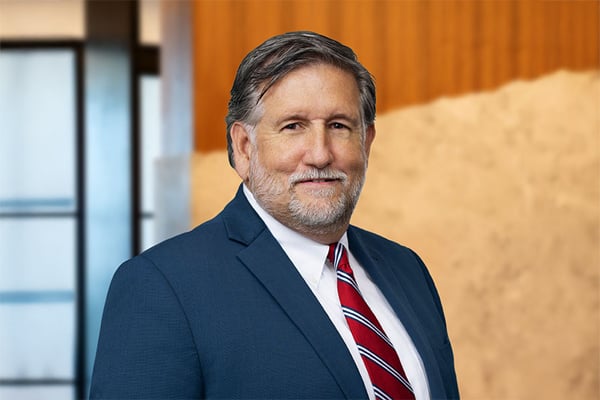Article
In Blow to Federal Agency Powers, SCOTUS Overturns Chevron
Published: Jul 1, 2024

On Friday, June 28, 2024, the Supreme Court of the United States reversed decades of increased federal executive agency power by overturning the longstanding deference to agency interpretations of statutes that resulted from Chevron v. Natural Resources Defense Council.
In the decision for Loper Bright Enterprises v. Secretary of Commerce, the Court found that Chevron’s holding overstepped federal agency authority by allowing agencies to interpret statutes – a power expressly assigned to the Judiciary in Article III of the Constitution.
This decision will have immediate and widespread impacts on federal agencies’ ability to create statutorily required regulations, especially with regards to the environment and the workplace.
Chevron’s History
In 1984, the Court heard a case regarding whether an Environmental Protection Agency (EPA) regulation was consistent with the term “stationary source” as it applied to the Clean Air Act. Previously, the Court had considered agency interpretation of federal statutes, seeing the agency as subject matter experts in their various realms. However, while their interpretations were given credence in informing decisions, the court did not have to defer to that interpretation if it differed from their own reading of the law.
However, the decision in Chevron ultimately changed that balance, giving a much higher weight to agency interpretation than it had previously. In Chevron, the Court articulated a two-step test to review agency action. First, the court needed to determine “whether Congress ha[d] directly spoken to the precise question at issue.” If Congressional intent was clear, any conflicting administrative agency interpretations would be outright rejected. However, if the statute at issue was unclear or ambiguous, the second part of the test required the court to defer to an agency if they had determined “a permissible construction of the statute,” even if it was different than what the court may have determined.
In the decades that have followed this ruling, federal agencies have relied on the Chevron test to legitimize regulations they have created that are based on an ambiguous law. Because Congressional statutes are often vague or open-ended, federal agencies often use their own interpretations to fill in missing details or apply them to new or unforeseen circumstances.
Loper’s Ruling
In Loper, several herring fishermen challenged a Commerce Department regulation that required them to pay the salaries of government-mandated observers. These observers were required to board the vessel to monitor the fishermen’s practices. However, the statute was silent on who should pay the salaries of the observers – the fishermen, or the government. The Department of Commerce, in drafting their regulations, required that payment would come from the fishermen, which the plaintiffs’ argued added upward of $700 daily to their costs.
The Court found that the ruling in Chevron was explicitly contrary to the Administrative Procedures Act, which governs how federal agencies interpret and implement regulations required by federal law. Writing for the majority, Chief Justice Roberts noted that “a statutory ambiguity does not necessarily reflect a congressional intent that an agency, as opposed to a court, resolve the resulting interpretive question.”
Potential Impacts
While it may take years to decide the full impact of Loper, everyone agrees that Chevron generally favored regulation. For the past forty years, environmental agencies have operated in the murky world of regulatory ambiguities, knowing that deference would be freely given to any “permissible” agency interpretation of an ambiguous statute or regulation. Because politics is said to be the muse for statutory interpretation, businesses and industries have argued that Chevron has been a driving force for ever-changing interpretations of complicated environmental statutes.
The Internet has gone viral with doomsday proclamations that Loper will allow the courts to block regulations aimed at addressing major environmental matters like climate change and protecting endangered species. This may be true. However, Loper will likely cut both ways. In the absence of agency deference, an administration seeking fewer environmental regulations may find that courts are less willing to accept its agency’s failure to take an action based on its interpretations that a law gives it the discretion to do nothing.
Eventually, we will know whether these doomsday predictions were accurate. In the meantime, courts no longer must give deference to the proverbial “because I said so” from agencies; rather, the courts have regained their power and judgment in deciding whether an agency has acted within its statutory authority. Equally important, those seeking judicial relief from burdensome regulations no longer face overcoming the deference hurdle of any and all “permissible” agency interpretations.
The Loper decision will undoubtedly change how the levers of power in Washington work, primarily by shifting more of the policymaking focus from the executive branch onto Congress (as well as the federal courts) and requiring greater specificity when drafting legislation, amendments, and committee reports.
About Our Authors
Rob Fowler serves as the Adams and Reese Environmental Team Leader, assisting clients throughout the firm’s regional and national footprint on environmental matters. Rob has over 28 years of experience in environmental and natural resource law. Rob helps clients navigate the complexities of the Clean Water Act, Clean Air Act, Surface Mining Control and Reclamation Act, Resource Conservation & Recovery Act, Comprehensive Environmental Response, Compensation, and Liability Act, Endangered Species Act, National Environmental Policy Act, and various historic preservation laws.
Michael Berson is a leading member of the Adams and Reese Governmental Relations team, experienced in federal funding, economic development, city, county, and local government laws. Michael represents businesses, municipalities, airport and port authorities, nonprofits, education and charter school clients, and other governmental entities including water and sewer authorities, utilities boards and industrial development boards.

